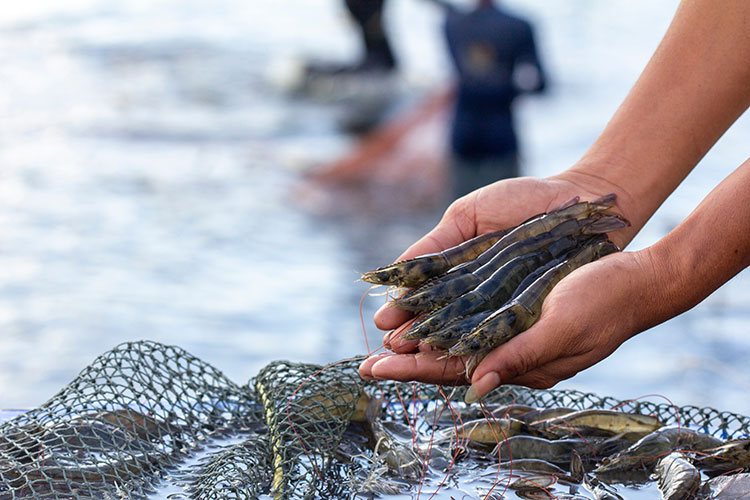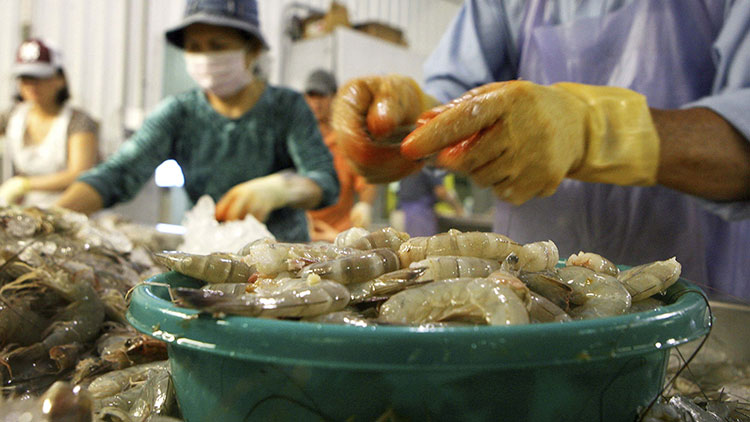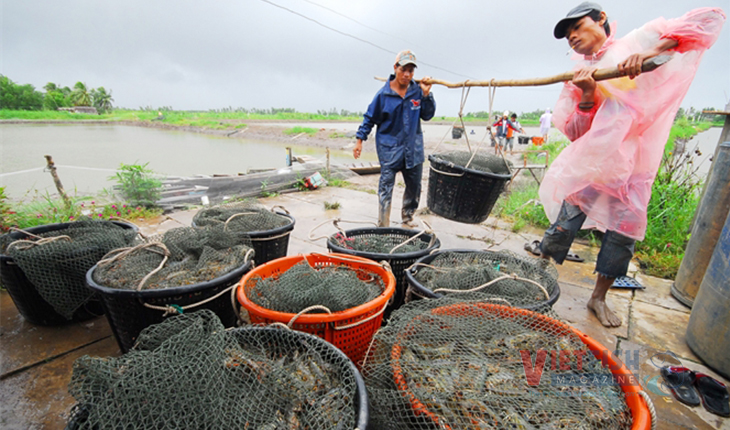Vietnamese shrimp prices begin to recover as U.S. delays countervailing tariffs
Vietnam’s shrimp industry is showing early signs of recovery following the United States' decision to delay the imposition of a 46% countervailing duty on shrimp imports.
Under the temporary measure, the tariff has been reduced to 10% for a 90-day period, an announcement that has immediately impacted the domestic market in a positive way.
In Ca Mau, the country’s leading shrimp-producing province, raw shrimp prices have risen slightly by VND 5,000-10,000 per kilogram depending on size. According to local traders, whiteleg shrimp sized 20 pcs/kg now fetch VND 200,000/kg, while 30 pcs/kg are priced at VND 146,000 and 40 pcs/kg at VND 127,000. These prices mark a welcome rebound after sharp declines earlier this month following initial tariff announcements.

“Prices have stabilized and even gone up slightly since the U.S. delayed its tariff decision,” said Tran Tan Tai, a shrimp buyer in Cai Nuoc District. “With costs now covered and some margin left, farmers are finally seeing profits again.”
Ca Mau continues to be a major force in Vietnam’s seafood sector, with over 303,000 hectares dedicated to aquaculture. The province contributes $1.2 billion annually to national seafood export turnover, with exports to the U.S. alone reaching nearly USD 71 million in 2023 and USD 77 million in 2024. In the first quarter of 2025, Ca Mau’s seafood exports hit USD 236 million, up 9% year-on-year, with the U.S. market accounting for USD 12.86 million.
The improved pricing climate has reignited production across various farming models. As of now, 99% of the 81,000+ hectares of integrated extensive shrimp farms have been restocked. Improved extensive models are fully stocked, and intensive and super-intensive farms have reached 95.4% of their annual plan, involving over 7,200 farming households.
To stay competitive, farmers are investing in technological innovation. At Tan Hung Cooperative, Director Huynh Xuan Dien shared that the co-op has adopted oxygen generators, paddle wheel aerators, and osmosis-based water treatment systems for industrial ponds. “These upgrades help us cut energy and water costs while improving shrimp health,” he said. “We also redesigned sedimentation ponds to optimize drainage and reduce pumping needs.”
Meanwhile, exporters are using this 90-day “golden window” to accelerate deep-processing initiatives, add value to products, and diversify their export markets. Phan Van Tam, Director of Human Resources at Minh Phu Seafood Group, said the delay gives businesses a crucial head start. “This is our chance to rethink strategy, strengthen supply chains, and build resilience after the shocks of trade and environmental policy changes,” he said.
Tam added that long-term competitiveness will depend on diversifying both markets and product lines, mastering new technologies, and anticipating future trade barriers.
According to the Vietnam Association of Seafood Exporters and Producers (VASEP), while the delay offers short-term relief, trade defense risks remain. To navigate this uncertain landscape, exporters are focusing on product transparency, branding under the “Vietnamese Shrimp” label, and aligning with global sustainability standards.
They are also intensifying efforts to leverage free trade agreements such as the EVFTA, CPTPP, and RCEP to tap into growing demand in Japan, South Korea, Canada, Europe, and the high-potential Halal market. This strategic expansion aims to offset potential losses if the U.S. reinstates higher tariffs after the 90-day grace period.
VFM





